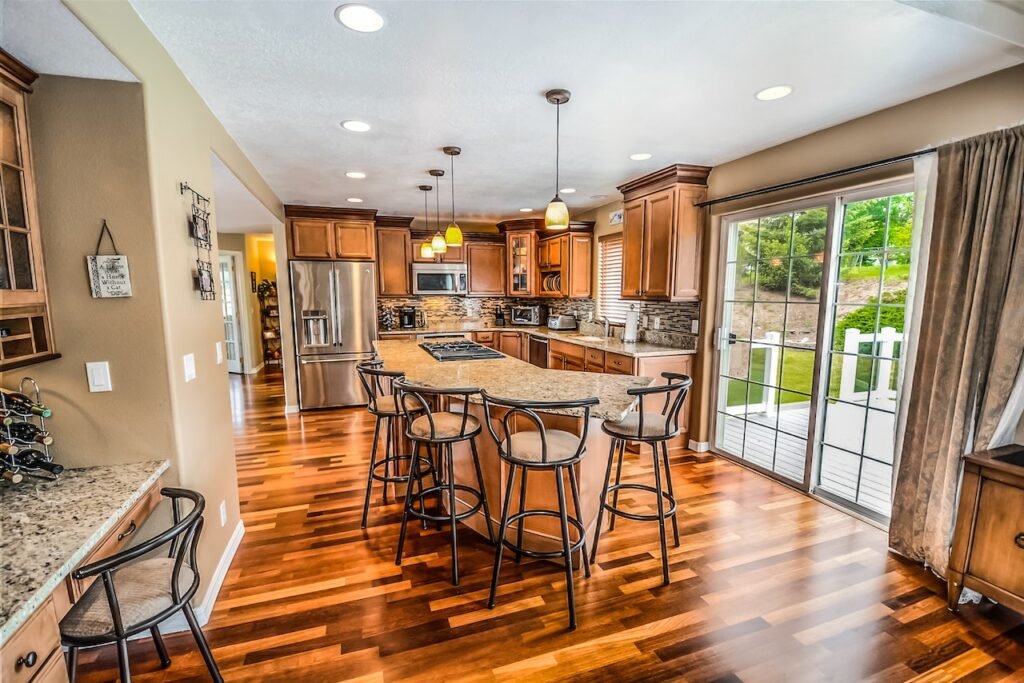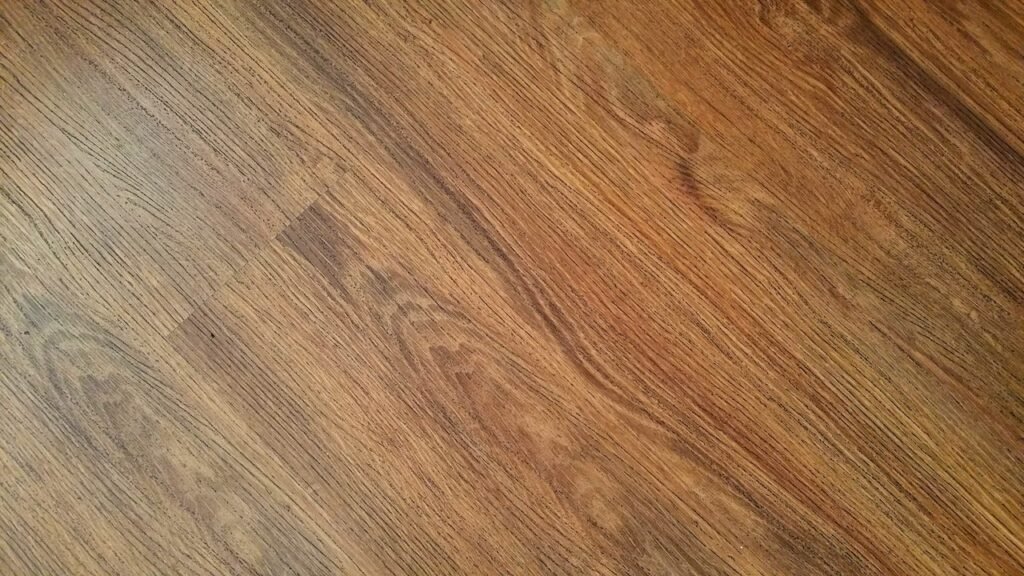Bamboo vs Hardwood Flooring: A Battle of Sustainability and Durability
0Shares
Bamboo vs. Hardwood flooring! These rivals stand out in the race for environmentally friendly and long-lasting flooring solutions, each with specific advantages and qualities. Hardwood flooring is in one corner, a traditional heavyweight prized for its enduring beauty and excellent toughness. The lightweight and environmentally friendly opponent, Bamboo Flooring, is praised for its quick expansion and renewable nature in the opposite corner.
We will examine these competitors’ interesting traits, advantages, and environmental effects as we dig into the conflict between sustainability and durability, assisting you in making an educated choice for your flooring requirements. So buckle up as we watch two powerful opponents square off to choose the ideal flooring champion that best suits your beliefs and way of life. Get ready to learn more about the differences between bamboo and hardwood flooring!
Knowing These Two Types of Flooring

Bamboo and hardwood flooring are two popular choices for homeowners wishing to put long-lasting and beautiful flooring in their homes. The two have a few significant differences, even if they each have unique characteristics and benefits.
Bamboo Flooring
Flooring options created from the bamboo plant include bamboo floors. Rather than being a hardwood, Bamboo is a kind of hardened grass. In making bamboo flooring, cylindrical, vertical stalks are transformed into horizontal bamboo boards that resemble typical hardwood flooring more closely. As a do-it-yourself home remodeling project, bamboo flooring products may give your present house a modern style or serve as the basis for a completely new home’s décor.
Natural and engineered Bamboo are the two varieties of flooring available. Natural Bamboo is merely solid Bamboo, while engineered bamboo flooring contains a top layer of Bamboo with plywood or similar substrate. Bamboo flooring may also be carbonized to give it a deeper shade; otherwise, bamboo flooring resembles the bamboo stalks’ original, cork-like shade more.
Hardwood Flooring
In comparison, wood flooring planks made from softwood trees and hardwood floors are possibilities for flooring made from hardwood trees. Traditional hardwood floors are made of wood species, including pine, oak, & red oak; each kind has different grain patterns, installation prices, and other characteristics. Solid wood and other long-lasting construction components make up engineered hardwood flooring kinds.
Solid hardwood flooring is available in both organic and engineered wood varieties. While the latter is constructed entirely of natural materials, engineered hardwood combines real and plywood. Depending on your preferences, there are many ways to install hardwood: some people use adhesives to glue the flooring material down; others use a click-lock technique for the side-by-side plank; and still, some nail it down straight into a subfloor and underlayment.
Comparison Between Bamboo and Hardwood Flooring

Bamboo and hardwood are popular for homeowners looking for long-lasting and aesthetically pleasing flooring solutions. They share certain characteristics, but they also diverge in several ways. This is how bamboo and hardwood floors compare.
Composition
Although other bamboo species with varying qualities may be used to make bamboo flooring, Moso bamboo is the most often used high-quality choice. It is tougher than even maple & oak hardwoods when harvested at its greatest density, which occurs at five to six years of age. Engineered bamboo (also known as stranded Bamboo) flooring is more durable than natural Bamboo, but it has undergone extensive processing, including stripping, boiling, cutting, bonding, and pressing. Bamboo that is lighter in color is tougher than Bamboo that is darker because the carbonization process used to brown the wood softens the latter.
Natural hardwood from the timber gathered in forested regions makes hardwood flooring. The tree determines the cost. For instance, wenge, mahogany, & teak are the three most costly types of hardwood. Pine is the most supple hardwood utilized in flooring and is also not too pricey. Engineered hardwood is an additional choice for regions susceptible to dampness, such as concrete flooring. This construction places A hardwood layer on top of plywood and fiberboard, allowing for some contraction and expansion.
Durability
Due to their extreme durability, Bamboo and hardwood flooring are both excellent choices for high-traffic areas of the house. The Janka hardness scale, which gauges wood strength by how well it resists being penetrated by a hard steel ball, may be used to assess this level of durability. Bamboo has a harder Janka rating than certain hardwoods and a softer grade than others. Both kinds of flooring will resist dents, scuffs, and other damage well, but hardwood often outlives Bamboo by more than a decade in terms of longevity.
Hardness
The word “hardwood” does not always mean that wood is a material with a high level of durability. Technically, any tree cultivated from an angiosperm seed derived from an ovum or fruit is called “hardwood.” This group includes several well-known plant species: oak, cherry, hickory, maple, & walnut. The second main group of trees is the gymnosperms, which grow from naked seeds—not protected by an ovum or fruit. This comprises Ginkgo biloba and the majority of coniferous trees (pine, spruce).
Hardwoods do not necessarily have a greater Janka hardness grade than softwoods when various timber species are evaluated for their resistance to impact or scratch. Wood is often evaluated using a technique known as the Janka Hardness technique. Starting with the depth to which a steel ball dents the wood when forced into it, hardness is measured. Bamboo and various hardwoods are smoother than some softwoods.
On the other hand, certain softwoods are harder than some hardwoods, such as Eastern red cedar, which has a hardness value of 900, and Douglas fir, which has a hardness rating of 660. Bamboo flooring often has a Janka hardness rating of 1,300 to 1,400, making it tougher than oak flooring in its original form. However, carbonization is used to darken certain bamboo floors.
Diversity
Each species and quality of hardwood has a unique appearance, texture, and grain pattern. This is worse because different cuts produce grains with differing degrees of uniformity. Hardwood also gives you more freedom to express yourself since it has more aesthetic options. You may choose from various species and options to get the design that best suits your area.
Longevity
Despite being natural and durable, hardwood floors are pricey. The popularity of bamboo flooring is growing, and it is less costly. Bamboo flooring is projected to last 10 to 20 years, but hardwood floors may last up to a century. Both kinds of flooring are vulnerable to harm by moisture in the surrounding atmosphere.
Quality
To assure the highest quality, hardwood flooring is examined for dimensions, form, structure, color, moisture content, & pattern. For the overall quality of wood flooring goods, several venerable independent organizations.
As a relatively new flooring option, Bamboo has yet to receive an official rating that would guarantee the product’s quality, origin, and consistency. Therefore, when you purchase bamboo flooring, you have yet to learn what you’re buying. Because any global trade agreements don’t cover Bamboo, it’s more challenging to guarantee that its acquisition is done in a socially and environmentally beneficial way. The ideal option is to work with a reliable supplier or manufacturer with a track record of using sustainable techniques or suppliers and is renowned for providing high-quality goods.
Finish
You may need to refinish hardwood & bamboo floors at some point in their lifespans since they can come in various finishes. Both are more effectively cleaned with a gentle soap than a strong wax cleaner. Both types are available as laminate or engineered flooring but bear in mind that the finish will affect how you approach future sanding and refinishing the wood.
Environment Considerations
Promoting bamboo flooring as a green product may be partly to blame for the current increase in its usage. In the sense that bamboo plants develop in three to five years as compared to 70 or 80 years for certain hardwoods, & the bamboo plants may regenerate after being cut, it is unquestionably highly renewable. The environmental factors, however, are more complex. There are certain restrictions on the environmental effects of bamboo growing and processing since most Bamboo originates from China.
Since hardwood is a natural resource, it is very environmentally friendly. It is advisable to get it from ecologically conscious producers to minimize overharvesting since it is recyclable and renewable.
Consideration About Bamboo and Hardwood Flooring

Homeowners often choose bamboo and hardwood floors because of their natural beauty, toughness, and environmental sustainability. When deciding between the two, there are a few important distinctions and things to bear.
Installation
Although installing bamboo flooring or hardwood may be done independently, unless you’re a seasoned do-it-yourselfer, it’s better to leave it to the pros. Hardwood and bamboo floors often need to be installed, fastened with nails or staples, the baseboard trim, and holes filled with wood putty.
Maintenance and Replacement
Bamboo flooring should be cleaned using something other than wet mops. For general cleaning, stiff brooms and dust mops are sufficient; a well-wrung-out mop may be used if required. Cleaning solutions that are suitable for bamboo and hardwood floors. Bamboo flooring that is damaged or scraped may be sanded down & repaired as opposed to having to be completely replaced.
Maintaining a hardwood floor is simple and involves sweeping and cleaning with a moist cloth to keep dirt off the surface. Where damage is serious enough to need replacement, the damaged boards may be hauled up and changed with matching material. Most worn and broken hardwood flooring may be fixed or refinished rather than replaced.
Damage and Scratch Potential
Compared to hardwoods, bamboo flooring is more vulnerable to damage. Scratches and moisture damage are the two main issues with hardwoods. However, both possibilities have weaknesses. To guarantee that any damage is, as far as possible, covered by the company’s warranty, you should ensure your procedures align with it.
Frequently Asked Questions
Are bamboo floors preferable to hardwood?
Bamboo is the more affordable choice when considering Bamboo’s hardwood floors’ hardness. Because it is grass, Bamboo resists moisture and mold development a little better than wood.
Can Bamboo be more durable than hardwood?
The average Janka rating for Bamboo is 1400. This ranks higher than white oak, walnut, and ash woods. It is amazing but doesn’t last as long as engineered hardwood, which may range from 2,200 to 8,000 on the hardness scale, depending on the wood type.
Does bamboo flooring cost more than hardwood ones?
Standard hardwoods like red oak or hard maple cost between $4 – $8 per square foot, while more uncommon hardwoods might cost as much as $10 per square foot. The average cost of bamboo flooring is $3.80 per sq ft, ranging from $2 to $6 per sq ft.
What makes Bamboo superior to wood?
Furthermore, bamboo fibers outperform wood fibers in terms of strength and resistance to deformation by variations in atmospheric conditions. Bamboo grows fast into a durable fiber that resembles wood, making it a fantastic substitute for conventional hardwood. Unlike most softwoods, which take 10–20 years to achieve maturity, Bamboo stems need 2–5 years.
Final Words
Because bamboo flooring is becoming increasingly fashionable, it could increase the value of your home if you want to sell it. Although Bamboo is a highly durable and strong flooring material, it is less ecologically friendly than its reputation would have you believe. However, hardwood offers a larger range of aesthetic options than Bamboo since it comes in several species and grades and performs and lasts at least as long as Bamboo.
0Shares
